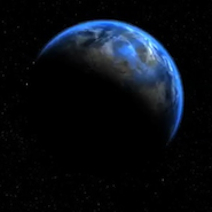Among all the objets in our Universe, some are much smaller than their siblings, such as dwarf stars or dwarf galaxies. Scientists now suggest dwarf black holes might exist, and that some might be forming right now.
When it comes to black holes, we usually hear about supermassive black holes, at the center of galaxies, or stellar black holes, formed after a star collapsed under its own gravity. Unlike the latter, a dwarf black hole would form when dust and gas are compressed from without during extreme astrophysical phenomena.
Andrew Hayes and Neil Comins of the University of Maine in Orono say that such black holes could form in the turbulence of a supernova explosion. Arbitrary volumes in supernovae ejecta could be compressed to such a high density they would eventually undergo gravitational collapse. These dwarf black holes would have a mass equivalent to a gas giant planet, with an event horizon of a few kilometers (under 10 kilometers in diameter).
As supernova ejecta is expelled at high speed, dwarf black holes may be located in the galactic halo, or even outside the halo, in the intergalactic medium, when they are ejected at speeds greater than the escape velocity of their parent galaxies (that would make them extremely difficult to detect).
In other words, if they exist, dwarf black holes would contribute to the mass of dark matter in the Universe. The researchers’ model also suggest that these black holes are being continuously created: their contribution to the dark matter content of the universe should increase with time, and hence decrease as we look further in the past.

